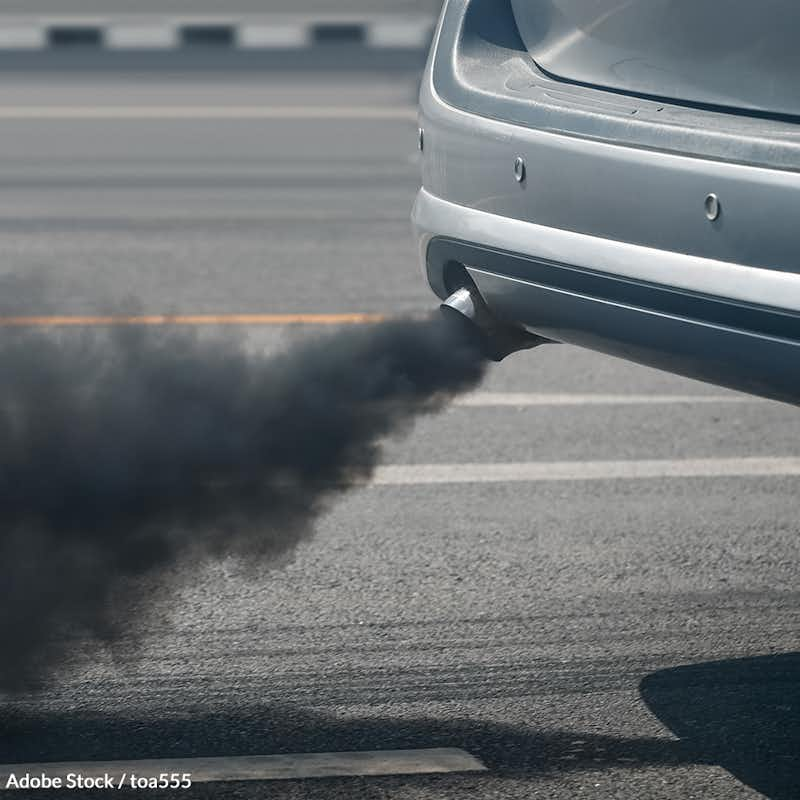Demand Clean Air Now! Strengthen Emission Goals
6,999 signatures toward our 50,000 Goal
Sponsor: The Rainforest Site
Transportation is the largest source of total U.S. greenhouse gas emissions. Let's set our emission requirement goals higher!

Twenty-nine percent of U.S. greenhouse gas emissions come from the transportation sector, making it the largest source of total U.S. greenhouse gas emissions.
Federal and state vehicle emissions and fuel economy standards are set by three agencies: the Environmental Protection Agency (EPA), the National Highway Traffic Safety Administration (NHTSA), and the California Air Resources Board (CARB). In 2020, NHTSA and EPA finalized new and revised standards for model year 2021?2026 light-duty vehicles (i.e., passenger cars and light-duty trucks), and revoked California?s authority to establish GHG emissions standards1.
The rollback of the 2012 regulations increased mileage requirements by 1.5% per year from the 2021 through 2026 model years. The California deal has 3.7% annual increases, while the Obama standards were about 5% annually2.
Under the previous standards, automakers also got double credit for fully electric vehicles toward meeting their fuel economy and pollution requirements. That "multiplier" was removed in the 2020 rollback2.
Warnings that the new rule had serious flaws were ignored. According to documents obtained by Sen. Thomas R. Carper on the Environment and Public Works Committee, anyone with an objection was stifled, and their comments were not entered into public record as required under the Clean Air Act3.
In another letter to the White House in February 2021, two dozen environmental and green-friendly groups including the Sierra Club and Natural Resources Defense Council urged acceptance of nothing less than the 2016 standards as part of a longer-term path to make all new cars and light-duty trucks zero-emission by 20354.
These rollbacks to national fuel and tailpipe emissions standards are expected to have the largest effect on future emissions out of all contributors to greenhouse gas5. New cars and trucks are expected to emit one billion more tons of carbon dioxide through 2035 than they would have if the cleaner vehicle rules had stayed in place.
Transporting people and goods accounts for 1.8 trillion tons of U.S. greenhouse gas emissions and approximately 70% of all U.S. oil use. significant reductions in auto and truck emissions are essential to climate change mitigation efforts.
Climate change is the greatest threat to the health of our planet. For the sake of our future, we need to confront the production of climate change-accelerating greenhouse gases head on.
Sign the petition below and demand the EPA and NHTSA restore the 2012 greenhouse gas regulations on passenger cars and light trucks.
- Center for Climate and Energy Solutions (2021), "Federal Vehicle Standards."
- Hope Yen, Tom Krisher, Associated Press (12 Msrch 2021), "Auto industry urges emissions deal weaker than Obama's."
- Sen. Thomas R. Carper (D-Del.), The Washington Post (18 May 2020), "Sen. Thomas R. Carper's (D-Del.) May 18 letter."
- Nadja Popovich, Brad Plumer, The New York Times (17 Sept 2020), "What Trump?s Environmental Rollbacks Mean for Global Warming."
- Environmental and Energy Study Institute (26 August 2015), "Fact Sheet | Vehicle Efficiency and Emissions Standards."
The Petition:
To the Administrator of the EPA and the Executive director of the National Highway Traffic Safety Administration,
The transportation sector is currently the largest contributor to the United States' total greenhouse gas emissions. As scientific studies have proven, these gases accelerate the effects of climate change, putting millions of Americans, our plants, animals and environment in danger.
The 2020 rollback of restrictions on federal and state vehicle emissions and fuel economy standards has put the U.S. on an expressway to disaster. New cars and trucks are expected to emit one billion more tons of carbon dioxide through 2035 than they would have if the cleaner vehicle rules had stayed in place.
Transporting people and goods accounts for 1.8 trillion tons, or 29%, of U.S. greenhouse gas (GHG) emissions and approximately 70% of all U.S. oil use. That's about 13.1 million barrels of oil per day.
With the burning of gasoline and diesel accounting for 59 percent and 24 percent of the transportation sector?s emissions, respectively, significant reductions in auto and truck emissions are essential to climate change mitigation efforts.
I demand you restore the 2012 greenhouse gas regulations on passenger cars and light trucks.
Sincerely,